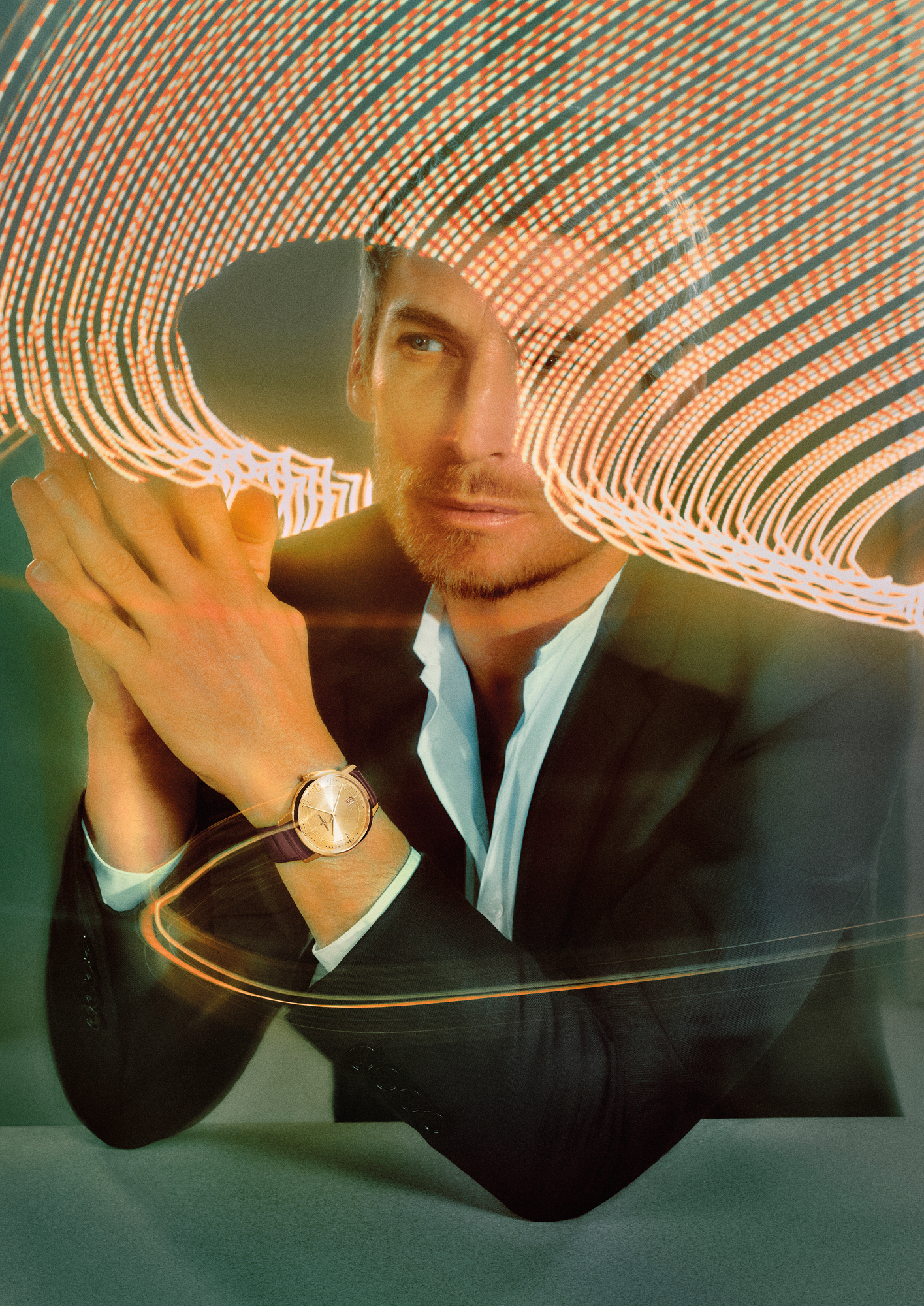WORDS
Joanne Glasbey
Historic Swiss watchmaker Vacheron Constantin is very much a swan in the horology world: a beautiful creature, elegantly gliding, while under the waterline there’s a lot going on to propel it so seamlessly. The signature style of the house conceals elaborate complexity beneath minimalist aesthetics, well exemplified by the latest limited-edition Patrimony model.
Vacheron Constantin handpicks “One of Not Many” talents to be collaborators and friends of the brand. Since 2019, it has enjoyed a relationship with French designer Ora ïto, who has worked with the team to create a model celebrating the 20th anniversary of the Patrimony collection. Inspired by a Vacheron Constantin timepiece from 1957, the Patrimony collection honours the grand watchmaking tradition. The ’50s were characterised by the creation of very slender, outstanding movements, culminating in chronometer-quality calibres, one of which, Calibre 1003, launched in 1955 to mark the Manufacture’s bicentenary, was at the time the world’s thinnest movement at 1.64mm. It’s still regarded as one of the highest-quality manual winding models produced.
In an homage to the horologically progressive decade, Vacheron Constantin launched the Patrimony collection in 2004, with its distinctive pared-back design and overall elegance. In the two decades since, the brand has never deviated from the range’s hallmarks, typified by a round case with slim bezel, domed dial with slim curved hour markers, curved baton-type hands and “pearl” minutes track.
Paradoxically, making something so simple is very complex, requiring manual retouching and obsessive concern for detailing. And such pared-back refinement is complemented by high-watchmaking mechanisms. All the collection’s pieces are driven by mechanical movements – from three-handers to complications that include retrograde date and day models.

As the face of the Patrimony collection, 47-year-old Ora ïto is very much a fan, finding it embodies what he calls his “Simplexity” concept. ‘A good design wasn’t created to be disposed of after a period of usage,’ he says. ‘It is designed around essentials to make it eternal.’ Simplexity, he explains, is the art of proposing a simple response to a complex problem, of giving a simple appearance to an object involving invisible complexity. It’s a philosophy he adheres to throughout his work as a designer in the fields of architecture, furniture, fragrances, phones and public transport, working with many prestigious international brands. Known for focussing on minimalist purity, his work can be seen up close in the new Patrimony.
The 100-piece edition showcases a 40mm yellow-gold case framing a tone-on-tone gold dial decorated with many concentric circles, which catch the light pleasingly. Its appearance is like a spreading, rippling wave, echoing the cambered dial surface. It’s not just a fascinating design: ïto, an astronomy enthusiast, explains that ‘this circular movement of light refers to the Baily’s [beads], a spectacular phenomenon that accompanies an eclipse of the sun by the moon.’ Lending a subtle vintage touch, yellow gold is used throughout: on the applied hour markers, the slender hands, the minutes track, as well as the date displayed at 6 o’clock in a tone-on-tone aperture.
The sapphire crystal caseback allows a view of the in-house self-winding movement, featuring high-watchmaking details such as circular graining on the mainplate, and an openworked gold oscillating weight revealing the house’s Maltese Cross motif. The watch is completed by a burgundy calfskin strap which is punctuated by ’70s-style softened oblong graphic motifs that enhance the vintage vibe and complement the circular geometry of the case and dial.
It’s a handsome paradox: at the same time simple but complex, understated and timeless, classic and contemporary.
£34,000; vacheron-constantin.com




